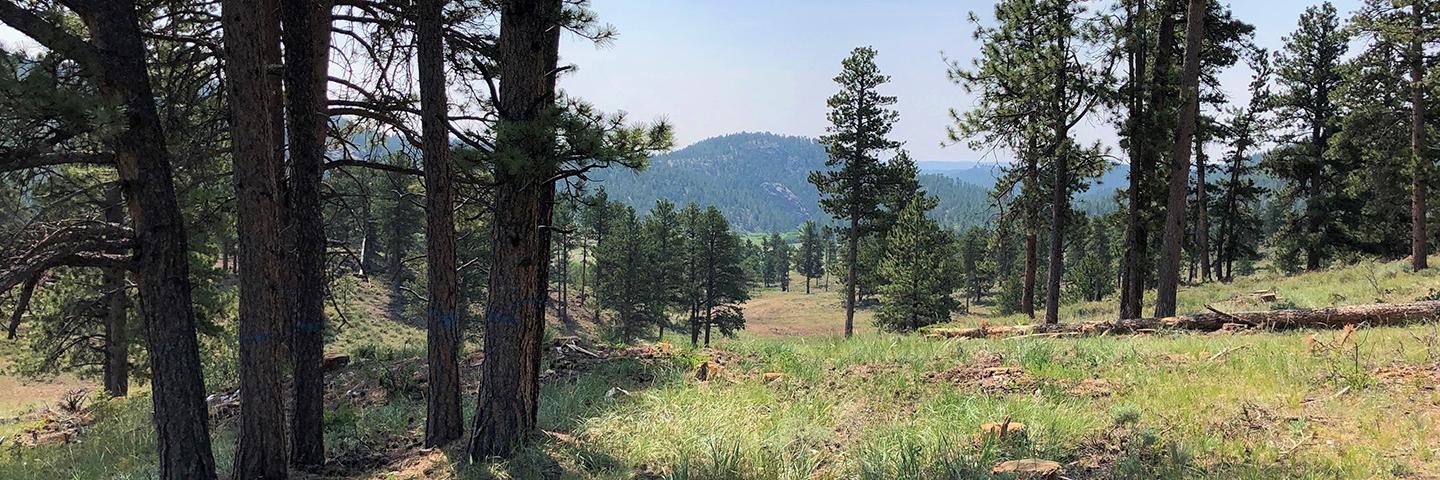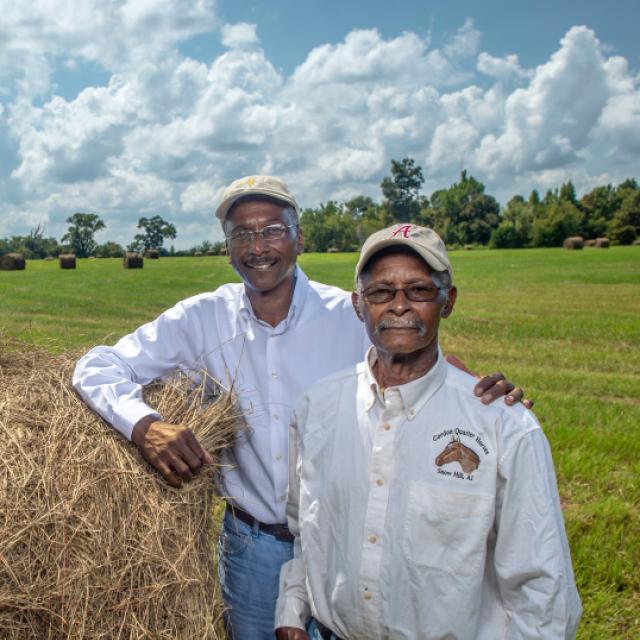
News

The Joint Chiefs' Landscape Restoration Partnership program (16 U.S.C. § 6592d) is working to improve the health and resilience of forest landscapes across National Forest System land and state, tribal, and private lands.
The Joint Chiefs' Landscape Restoration Partnership enables NRCS and the Forest Service to collaborate with states, agricultural producers, forest landowners, tribes and public land managers to invest in conservation and restoration at a big enough scale to make a positive difference. Working in partnership, and at this scale, helps reduce wildfire threats to communities, protect water quality and supply, and improve wildlife habitat for at-risk species.
Through the three-year projects, NRCS and Forest Service work in partnership with state forestry agencies, non-governmental organizations, and private landowners to apply targeted forestry management practices across public and private lands. Past projects have included hazardous fuel treatments, installing fire breaks, reforestation, riparian habitat restoration, and many other activities needed to meet the challenges on their landscapes.

USDA is investing more than $8 million for five new projects through the Joint Chiefs’ Landscape Restoration Partnership Program, a collaborative effort between USDA’s Natural Resources Conservation Service (NRCS) and Forest Service to work across public-private boundaries and at a landscape scale. The $8 million investment in new projects is in addition to $32 million for 24 existing three-year-long projects. These projects reduce wildfire risk, protect water quality, and improve forest health across the nation to meet the Department’s objectives to safeguard American families, support rural communities, and expand domestic timber production.
In 2024, USDA’s Forest Service and Natural Resources Conservation Service (NRCS) invested $55 million in 10 new projects.
In 2023, USDA’s Forest Service and Natural Resources Conservation Service (NRCS) invested $48.6 million in 10 new projects.
In 2022, USDA invested more than $48 million in 41 projects, including 17 new ones.
Since 2014, USDA has invested more than $423 million in 134 projects in 42 states as well as Guam and Puerto Rico. These projects focus on areas where public forests and grasslands intersect with privately-owned lands and have delivered important forest and rangeland funding. They provide private landowners with conservation resources that help them complete restoration efforts on their land for healthier and more resilient forest ecosystems
The efforts of the Joint Chiefs' have produced outstanding results that can be explored here.
Joint Chiefs' project proposals are developed at the local level through a collaborative process between NRCS, Forest Service and partners. Past partners have included county, state, non-governmental, Tribal, utilities or private individual stakeholders. The collaboration process and partnerships will depend on the specific community needs of each project. Proposals are submitted by the local NRCS and Forest Service offices to the national agency offices. Proposals are reviewed and vetted at multiple levels in the agencies based on local, state, Tribal and regional priorities.
For more information on the proposal development process, evaluation criteria, or collaboration opportunities, please contact one of the program contacts below, or use the following links to find a local NRCS office or Forest Service contact.
The following evaluation criteria have been considered in the selection process:
Clint Cross, FS
202-205-0995
clint.cross@usda.gov
Matthew Vandersande, NRCS
202-690-1588
matthew.vandersande@usda.gov
Contact your local service center to start your application.
Do you farm or ranch and want to make improvements to the land that you own or lease?
Natural Resources Conservation Service offers technical and financial assistance to help farmers, ranchers and forest landowners.

To get started with NRCS, we recommend you stop by your local NRCS field office. We’ll discuss your vision for your land.
NRCS provides landowners with free technical assistance, or advice, for their land. Common technical assistance includes: resource assessment, practice design and resource monitoring. Your conservation planner will help you determine if financial assistance is right for you.
We’ll walk you through the application process. To get started on applying for financial assistance, we’ll work with you:
Once complete, we’ll work with you on the application, or CPA 1200.
Applications for most programs are accepted on a continuous basis, but they’re considered for funding in different ranking periods. Be sure to ask your local NRCS district conservationist about the deadline for the ranking period to ensure you turn in your application in time.
As part of the application process, we’ll check to see if you are eligible. To do this, you’ll need to bring:
If you don’t have a farm number, you can get one from USDA’s Farm Service Agency. Typically, the local FSA office is located in the same building as the local NRCS office. You only need a farm number if you’re interested in financial assistance.
NRCS will take a look at the applications and rank them according to local resource concerns, the amount of conservation benefits the work will provide and the needs of applicants. View Application Ranking Dates by State.
If you’re selected, you can choose whether to sign the contract for the work to be done.
Once you sign the contract, you’ll be provided standards and specifications for completing the practice or practices, and then you will have a specified amount of time to implement. Once the work is implemented and inspected, you’ll be paid the rate of compensation for the work if it meets NRCS standards and specifications.